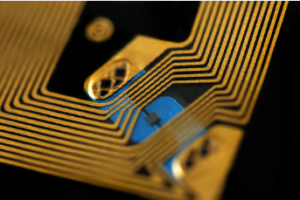RFID technology can collect valuable data insights that help with process optimisation, inventory management and asset visibility. These insights can increase performance and reduce costs.
An RFID tag is a small electronic chip that contains information about its owner. When a person wearing a bib, lanyard, wristband or badge comes within range of compatible RFID hardware, their tag is read, and the resulting data is recorded. For quality RFID tags Australia, check this out.
Inventory Management
 RFID tags can track inventory, including items in stores and equipment in warehouses. They can also be used to identify authorised personnel and provide access control. The technology can save businesses time and money by automating manual tracking systems and reducing the cost of labour.
RFID tags can track inventory, including items in stores and equipment in warehouses. They can also be used to identify authorised personnel and provide access control. The technology can save businesses time and money by automating manual tracking systems and reducing the cost of labour.
The information stored in an RFID tag is encoded on an integrated circuit. It can be read by an electromagnetic field generated by an RFID reader, which can then transmit the data to a host system. The RFID reader can detect the microchip within a few inches or centimetres of an object, which allows for faster scanning than is possible with barcodes.
Retail brands like Zara have incorporated the technology into their supply chains, with each piece of clothing carrying an RFID tag that tracks it from production to store shelves. It significantly reduces stocking times and optimises the shopping experience for customers. The National Livestock Identification System (NLIS) uses RFID to track cattle from birth to slaughter to help uphold overseas confidence in Australia’s beef exports.
Access Control
Using RFID tags, access to specific areas within a facility can be granted with greater accuracy and speed. It allows businesses to optimise security and reduce labour costs in facilities where crowd management is a critical component of operations. For quality RFID tags Australia, check this out.
The identifying information stored on the chip can be used to track a person, raising privacy concerns. However, in military or medical settings, it can be a matter of life or death to locate equipment quickly. It is one reason why many hospitals, airports and other facilities employ RFID technology to monitor patients’ equipment and ensure they are receiving the proper medications. They can also help prevent theft or loss of vital supplies.
Asset Tracking
RFID tags contain microchips that store and transmit data, which allows facilities to track the location of equipment in real-time. The microchips communicate with an RFID reader using radio waves, which are sent and received by the tag’s antenna.
The least expensive tags typically cost a few cents and are designed for one-time use in non-rugged environments. More durable RFID tags can withstand flames, impact, freezing temperatures, chemicals and direct sun and can be used for more rugged applications like supply container tracking and vehicle identification. These active tags require a battery and an ongoing signal, which are more expensive than passive options. But they can be a good option for RTLS and constant monitoring of assets or people like those involved in medical care, theme parks and logistics.
Security
When people use a credit card at the gas station to buy a dozen doughnuts or the Qantas airline synchronises your bag with your passport using RFID, they don’t think about where that data ends. Nor do they feel that they could be tracked using that same technology.
RFID tags are embedded in products and used to communicate with readers who scan them for information. Some people are concerned about privacy because this system can track a person’s movements and identify personal information. Others worry that the collected data might be misused.
Other applications include e-passports, which incorporate an RFID chip for tracking passengers’ movements through airport security. Moreover, RFID is being widely used in hospitals to track patients’ progress, identify and locate them, and ensure that they receive the right medication at the right time. It helps to minimise medical errors and improve safety and patient outcomes. As the demand for RFID increases, manufacturers are working hard to develop more advanced and cost-efficient solutions. It includes combining RFID with other technologies, such as mobile computing and sensor technology, to enable the Internet of Things and create an intelligent, integrated network that will benefit both consumers and businesses.


